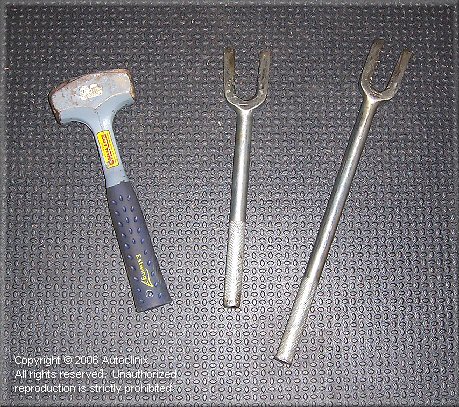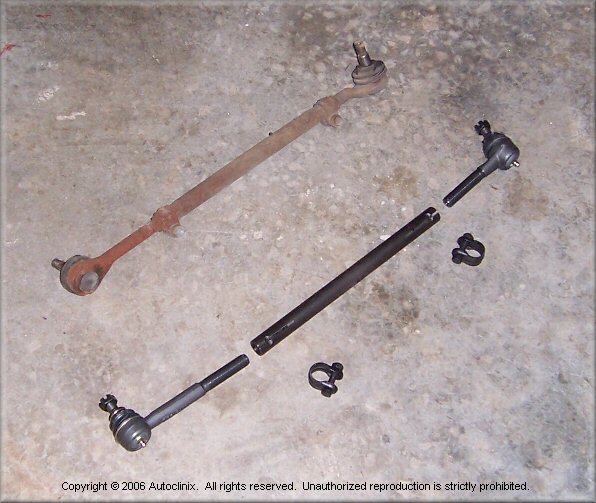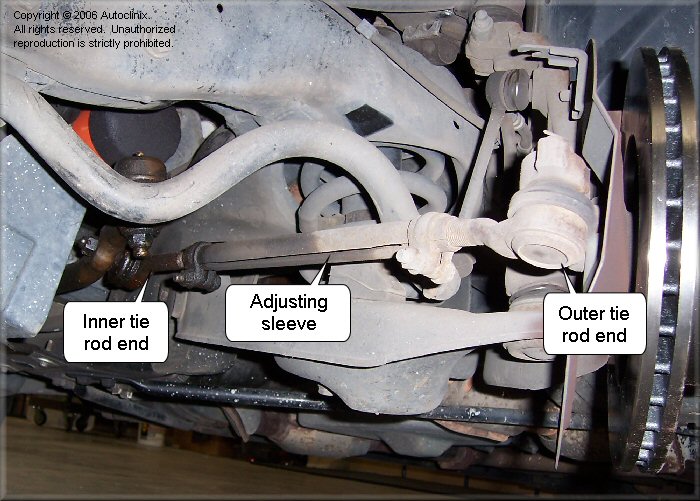|
One of the less-common items you will need is a set of pickle forks (see picture below). These are used to seperate the outer tie rod end
from the spindle and inner tie rod end from the center link. You can find them at auto parts stores (often times on the
"cheap tool table" or at places like Harbor Freight). You'll also need a good size (weight) hammer to use the pickle
forks effectivly. We used a 3lb "drilling" hammer (kind of small, hand-held sledge hammer) and it worked well because
it has some weight to it and a large striking face. If you don't have this type of hammer (or some other heavy, large-face
hammer) your might want to get one. They make the job a lot easier and less likely that you'll accidently hit your hand,
cuss and have to get your wife to drive you to the emergency room, etc.

Replacement parts...
You will also need new tie rod ends (and optionally adjusting sleeves). There are variety of opinions on which brand(s)
of parts to use and whether or not to use OEM (Ford) parts. There are definitely a large number of knowledgable repair
people who strongly believe that many OEM Ford suspension parts are better-made and last longer than many if not most
of the aftermarket replacement parts. For example, many mechanics who service Crown Victoria police and fleet
vehicles often prefer OEM Ford parts becuase in their experience they just last longer and hold up better.
Having said that, Ford does not actually make tie rod ends (or ball joints, etc.) they source them from companies
like TRW, Moog, and others. These same companies sell tie rod components through your local auto parts stores.
Also, the OEM Ford parts do not have grease fittings and thus cannot be lubricated (or re-lubricated) during the
life of the part. Almost all aftermarket parts do have grease fittings and can be "lubed" regularly to help
increase their lifespan. As such, we chose to use some aftermarket TRW-brand parts from our local auto parts store.
The TRW components came with grease fittings and have a lifetime replacement warranty. See picture below of the old and new tie rod
components:

In summation, we would recommend using name-brand repalcement parts (like TRW) with grease fittings or use OEM parts
from Ford. In general, stay away from no-name store-brand parts or the "value-line" parts. There's a reason they
cost less than name-brand parts and have shorter warranties.
Looking Underneath...
The picture below shows the "before" picture of our test car's driver-side tie rod. The basic tie rod components are
labeled.

|